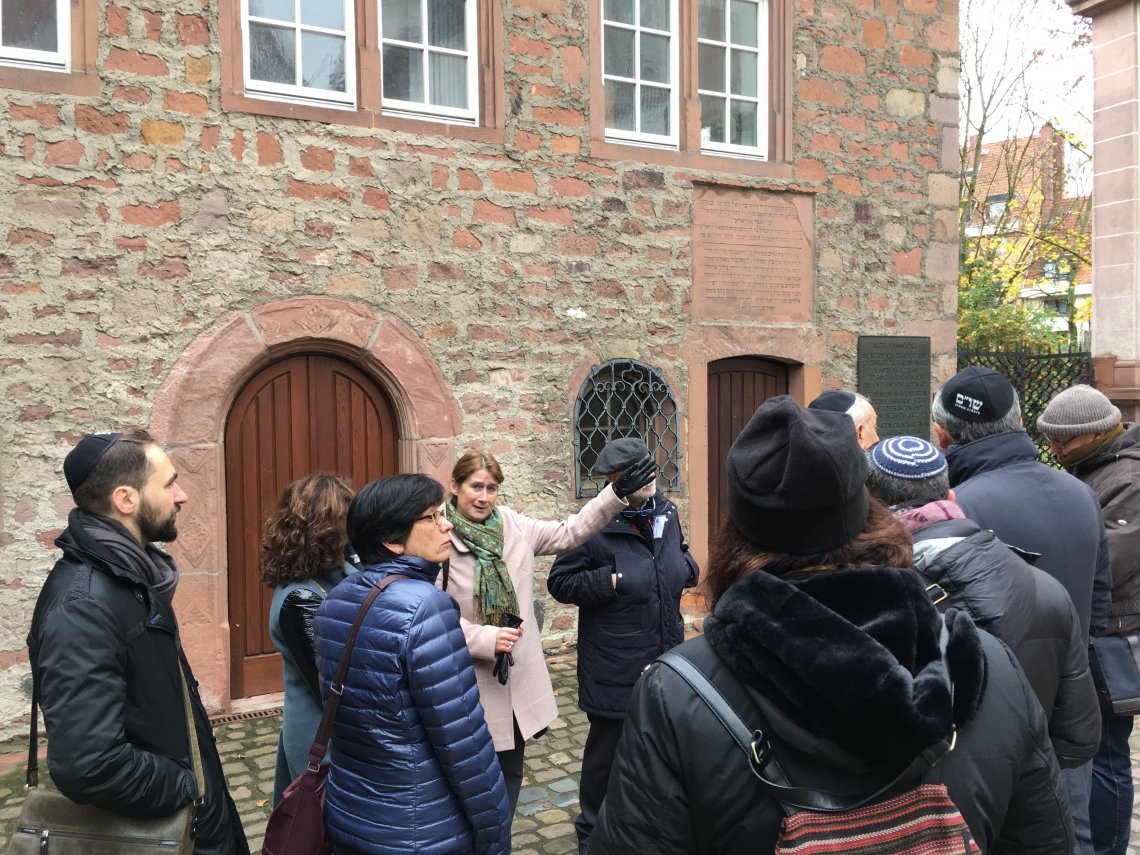ShUM and UNESCO
»Jewish cultural heritage forms an integral part of the shared cultural heritage in Europe and therefore requires a common responsibility to preserve it. By ensuring the survival of Jewish historic sites, collective memory would also be preserved. Valuing and having a deeper understanding of Jewish culture and heritage, which reveal significant cross-cultural exchanges and mutual enrichment with other cultures, will also contribute to inter-cultural dialogue, promoting inclusiveness and social cohesion, and combating ignorance and prejudice..«
Council of Europe, Jewish cultural heritage preservation, September 2019
2004: After a meeting of the Jewish Community Mainz/Worms with the Association »Warmaisa«, Worms' Mayor Michael Kissel recommends to the Federal State that the ShUM-Sites Speyer, Worms, and Mainz pursue the inclusion into the UNESCO-World Heritage List. An exhibition and a conference in Speyer on Jews in the Medieval Perios added to the ide.
2005: The Government of Rhineland-Palatinate committs itself to the process of applying for World Heritage Status for the ShUM-Sites Speyer, Worms and Mainz.
2012: Applicaton by the Federal State of Rheinland-Pfalz State to the Standing Conference of the Ministers of Education and Cultural Affairs (KMK) for the purpose of the ShUM-Sites being included on the German Proposal List.
Since June 2014: The ShUM-Sites are listed as 5th on the Tentative List of KMK.
2020: The State of Rheinland-Pfalz submitted the Nomination Dossier with the Managementplan to the World Heritage Committee.
27, July 2021: Inscription of the ShUM-Sites as World Heritage.
Application
The nomination dossier including the management plan comprises more than 1000 pages! Behind it are many actors who have worked out the dossier together and contributed their part, bundled and coordinated by first the Ministry of Science, Further Education and Culture Rhineland-Palatinate, since spring 2021 the Ministry of the Interior, accompanied mainly by the General Directorate of Cultural Heritage Rhineland-Palatinate, the Universities of Heidelberg and Trier, the cities and their specialized offices as well as actors in the preservation of monuments and the SchUM-Städte e.V..
The application was checked for completeness in Paris. An expert from the International Council on Monuments and Sites (ICOMOS) reviewed the application in September 2020 and inspected the site, which was then recommended for inscription.
Whoever is being officially recognized as UNESCO World Heritage, engages in a long-term commitment, as stipulated, for example, in the Managementplan, to protect the World Heritage Site, at the same time making it accessible, conducting educational activities, etc. World Heritage Sites are subject to being monitored by the ICOMOS. The ShUM-Sites represented by its owners and trustees are aware of the long-term nature of the activities that are bound with the World Heritage recognition and would like to assume this challenge.
Mediation and preservation, the constructive exchange on issues of the co-existence of different cultures and religions and the engagement with Jewish traditions and Jewish teachings in their importance, also for the present day - these will be just a few of the cornerstones after the inscription of the ShUM-Sites as a UNESCO-World Heritage Site.
General Public
Every year there are tens of thousands of visitors in each city - Speyer, Worms, and Mainz – interested in the diverse heritage of ShUM.
The infrastructure varies, in regards to accommodations as well as catering. For Jewish visitors, all three cities are significant, but there is some limit to the length of time usually spent. Many people go back to Frankfurt or to another city after visiting. Tourists that are interested in ShUM and other offers also stay for various reasons as overnight guests. In the future, special offers for different visitor groups will be developed which open up to different needs.
Already existing events about the ShUM-Sites should be expanded. Aspects of Jewish history and the handing-on of the traditions of ShUM in the time of Emancipation, of the German Empire or the Weimar Republic, of the Nazi era until the end of the Shoah, after 1945 and in the present day can also be addressed as well as the question: »What does ShUM mean today – and to me personally?«
Whether the New Synagogue in Mainz, the Jewish Culture Days in ShUM or the SchPIRA Museum in Speyer and teh Jewish Museum in Worms with its new exhibit – there are plenty of points of reference for a time-transcending journey of discovery in the structures and monuments, the traditions and narratives of ShUM and the communities' history, their unbroken significance for Jewish remembrance and, last but not least, examining what Jewish life means today.
The UNESCO-World Heritage status is a central and significant task, which the State, the ShUM-Sites, the participating ministries, offices, committees, and institutes are proud to take on. It also involves explaining and protecting the significance of this heritage, preserving the monuments and filling them with life by presnetation and education.
UNESCO on ShUM







